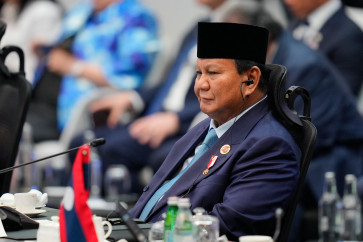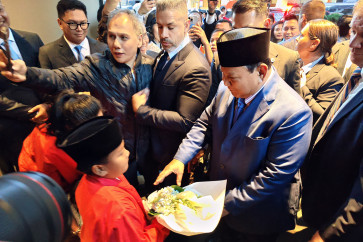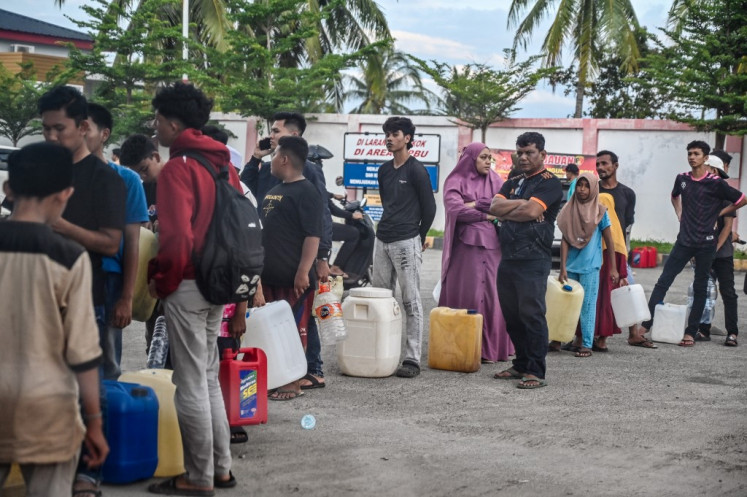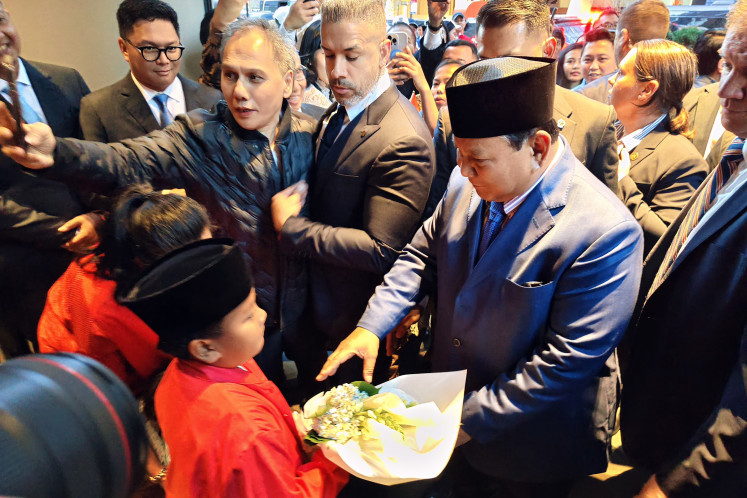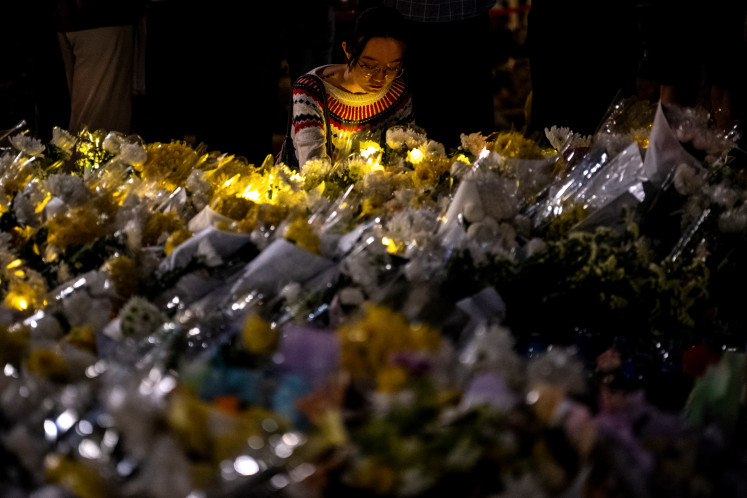Popular Reads
Top Results
Can't find what you're looking for?
View all search resultsPopular Reads
Top Results
Can't find what you're looking for?
View all search resultsPreserving ‘Ulos’
Modern touch: A model wears contemporary ulos woven fabric from North Sumatra’s Batak tribe as part of the Ulos, Hangoluan & Tondi exhibition, which runs until Oct
Change text size
Gift Premium Articles
to Anyone
M
odern touch: A model wears contemporary ulos woven fabric from North Sumatra’s Batak tribe as part of the Ulos, Hangoluan & Tondi exhibition, which runs until Oct. 7 at the Textile Museum in Petamburan, West Jakarta.
An exhibition shines a light on the cultural significance of ulos, the woven fabrics of the Batak tribe in North Sumatra, in an effort to preserve them.
An ongoing exhibition titled “Ulos, Hangoluan & Tondi” at the Textile Museum in Petamburan, West Jakarta, showcases 50 types of ulos to highlight the importance the traditional woven fabric in the culture of the Batak people of North Sumatra as well as its philosophy that runs deep into almost every aspect of life.
Most of the artefacts at the exhibition, which runs until Oct. 7 as a joint project of the DEL Foundation and Tobatenun, come directly from the personal collection of Devi Pandjaitan, the wife of prominent North Sumatra-born military and political bigshot Luhut Pandjaitan.
“After discussions with the organizers and Bu Devi herself, it seems like the exhibition is aimed at exposing the different types of ulos, most of which people don’t know about. This can also attract younger people’s interest,” said ulos expert Torang Sitorus.
The Batak tribe live and die by their ulos. The ulos cloth is their main source of warmth after the sun and fire.
Because the ulos shields them from wind or coldness, it is viewed as an essential item by the Batak people throughout their lives, from birth to death.
That is why members of the tribe are seen and defined by the ulos they wear. There are specific symbols, for example, for women that are about to be married and for women who have recently given birth.
Heritage: Ulos is viewed as essential to the Batak people throughout their lives, from life to death.“For every life event in a Batak person’s life, there is an ulos that addresses it. The stages of one’s life are depicted through the ulos patterns and weavings worn, and it creates a sense of identity,” Torang explained.
The exhibition is designed to take the visitor on a journey from a Batak birth to the afterlife.
Entering the hall, one is greeted with Batak philosophies guiding the visitor to an understanding of the relevance of the ulos in Batak culture.
An example of this is found in the Birth section of the exhibition, where several ulos weavings are displayed rather modestly, with their descriptions.
A lobu-lobu ulos sits in the corner of the section, telling the visitor that the black cloth is unique, because its fringes are not cut, in order to symbolize the infinite circle of life. The specific philosophy of this cloth from the Toba Samosir area makes it a typical gift to Batak women who are having trouble conceiving.
“The lobu-lobu [reflects] hope for the protection of a woman’s child until the next generation. It is round-shaped, which is rare in ulos, and surprisingly, not many Batak are aware of this,” said Tobatenun representative Kerri Na Basaria.
Many of the ulos weavings are bestowed on women for their standing as glorified and precious beings within the culture. Whatever ulos a woman wears is seen as essential to her life journey and her cultural identity.
Another example, the ulos ragi hotang weaving presented in the Life section, features tight and intricate patterns, which symbolize “binding and therefore, security” in one’s life.
Exquisite: The exhibition displays 50 ulos woven fabrics, of which nearly half are rare pieces that come mostly from the personal collection of Devi Pandjaitan, the wife of prominent North Sumatra-born military and political bigshot Luhut Pandjaitan.It is a significant cultural treasure that exists in the heart of North Sumatra, but like many other traditions in Indonesia, it is in danger of fading away as a result of generational disinterest and other troubling factors.
For one, ulos weavings are facing a much larger threat coming from the supply side; a problem that unfortunately exists in almost all aspects of Indonesian business.
Because a traditionally woven ulos cloth uses a large amount of thread, up to 300 or even 400 rolls, there needs to be a supplier or source for this large number of threads, and where there is large demand for something, there will definitely be those who try to take advantage of it for personal gain.
“Thread mafias, as I like to call them, tend to monopolize the ulos thread supply, so it’s getting harder for weavers to get hold of their resources, especially when a lot is needed,” Torang explains.
Aside from this, the ulos is fading out of memory because the government is failing to preserve the culture.
The way to preserve the ulos, added Kerri, was to rely on machines to print the textiles at a faster pace, but even if this method worked to preserve the cloth, it would eventually undermine the traditional art of hand-weaving, which is seen as essential to an ulos’s form.
“The reality is that, to preserve the ulos, we have to resort to technology and wear more commercially made ones. Doing so will also sustain awareness for the traditional ulos,” she said.
“We hope that, in the future, ulos can be recognized as a national treasure on the same level as Javanese batik.”
Hoping for good: The exhibition includes a “passage to paradise” section, where a symbolic tree is located. Visitors can write down their hopes and dreams on material that they can then hang on the tree.— Photos by JP/Umair Rizaludin.






